

Início
Detailed Presentation of the process
Temas fortes ligados:
Educação e responsabilidade .
Meio ambiente e responsabilidade .
Temas largos ligados:
Crianças .
Educação Ambiental .
Schools .
Sustainable development .
Youth .
Let’s Take Care of the Planet
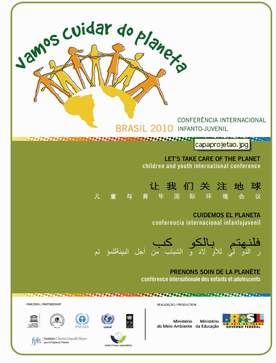
1. INTRODUCTION
The Government of Brazil, through the Ministries of Environment and Education, invite the nations of the world to participate in a large scale process of international cooperation: the Children and Youth International Conference for the Environment – Let’s Take Care of the Planet , in Brasilia, 2010.
This proposal originated with the Brazilian experience [1] regarding Brazil’s National Children and Youth International Conferences for the Environment , and the international version will occur from a bigger process of connections between the participating countries.
The Children and Youth National Conferences for the Environment are a group of environmental education strategies focused on proven learning systems. These conferences became part of the political process of the Management Organ of the National Policy for Environmental Education in Brazil [2], formed by the Ministry of Education (MOE) [3] and by the Ministry of the Environment (MOTE) [4] .
The Management Organ follows the mission of the National Environmental Education Program - NEEP [5] : “The environmental education contributes to sustainable societies with happy people who are quick to act all over Brazil.” Paulo Freire pointed out that “the possible dream has to do exactly with a liberation education, not with a domestication education, while at the same time practicing utopia [...]. Utopia in the sense of the practice that leads dialectical, dynamic, enter the denunciation of an unjust society with exploitation and pointing toward a possible dream for society...” a dream that we now call “sustainable society.”
In 2003 and 2005, Brazil respectively organized the First and Second Children and Youth National Conference for the Environment (CYNCE), with the direct participation of 21,000 schools and 7.5 million people. In April of 2009, in its third national edition, the Conference will take place at the center of the environmental education-public politics of Brazil. Also, it will be exposed to a larger degree around the associated international observers meeting, who will be able to experience the process.
In April of 2006, during the second Children and Youth National Conference for the Environment, the National observer Edith Sizoo [6] suggested to the Brazilian Ministers of Environment and Education that Brazil should share the experience with other countries by way of organizing a global version of the event. The international interest taken in the Brazilian approach to environmental education motivated the federal government, by way of its Ministries, to take over the task of facilitating and organizing the International Conference.
Thus, Brazil presents the world with a social-educational technology that directly involves children, teenagers, and teachers from all over the world in an international event with delegates from many countries who can debate local, regional, and global social-environmental issues. These delegates are encouraged to assume their responsibilities and act, forming a world-wide web, or system of connections, both formed and used by children and youth: Let’s Take Care of the Planet. The process to get to the International Conference starts with the study and debate of the proposed topics at local schools, followed by the Conference for the Environment at Schools.
Through these conferences, delegates will be selected who can participate in their country’s own National Conference After that, National Conferences in each participating country will happen in which the selection or election of delegates who will participate in the International Conference, to take place in Brazil in 2010, will occur.
It is necessary through this methodology to point out that the Conferences in Brazil are spaces of learning in which participants engage in democratic processes. These conferences are part of an articulated system which is both educational and integrated. In order to facilitate this, they serve as an ongoing educational process in which teachers and environmental educators must attend permanent initial and continuing information sessions. Also, this system promotes the development of actions within the implementation of the Commission of Environmental Quality and Life (COM-VIDA) with Agenda 21 at schools (for more details, check attachment 2: the Brazilian Experience).
Topics for Debate at Schools Around the World: Climate Changes / Global Warming
The International Conference proposes as a central topic for debate, common to all countries, global climate change and the process of global warming. We are living today with the most relevant possible crisis in human history; a social-environmental planetary crisis. We know that the environment cannot simply be reduced or focused based only on worries regarding ecology – an area of biological sciences – or with nature, because it is completely reorganized and surrounded by social, cultural, human life. Nature can be considered a condition which is necessary to sustain life, and it can be transformed in areas of action in which we need to make political, practical, and ethical decisions. Thus, when we propose the topic of Climate Change as the support of debates, we intend that it will be studied completely, with a focus given to each of its different dimensions: ecological, historical, geographical, social, cultural, economical, and technological; therefore bringing to the schools of the world a debate regarding alternative strategies to organize and co-exist in a society based on an ethic that prioritizes the construction of sustainable, just, and equal societies.
The Children and Youth International Conference for the Environment co-exists within the timeframe, the missions, and the goals of the Decade of Education for Sustainable Development – DESD (2005 – 2014), an initiative of the United Nations / UNESCO. The Decade of Education for Sustainable Development aims to contribute to the incorporation of a new generation of people, a large portion of humanity that is traditionally thought of as the future but that lives, thinks, and acts in the present. The decade was created by the General Assembly of the United Nations, initiated on the 1st of January, 2005. The main themes of the Decade include: citizenship, community values, diversity, interdependence, sustainability, quality of life, and social justice. All of which are in touch with the goals of the International Conference.
The Government of Brazil, counting on the institutional support of those Agencies for Development and Cooperation during the entire process, is available to serve as the organizer and host of these educational events with an international focus. The Conference, as well as the resolutions originated there, must be the expression of a collective action between international organizations and institutions, national governments, civil society, and schools.
2. HISTORICAL CONTEXT
In the global view, environmental education started to be defined in the 1970’s. Different international meetings endowed this topic with a considerable importance within the international agenda. The principles of environmental education were key to the creation of: programs, documents, and agreements that were signed by different countries. These initiatives came from: civil society, government, and different Agencies of the United Nations such as: the Stockholm Conference of 1972; the Intergovernmental Conference on Environmental Education, Tbilisi 1977; and the United Nations Conference on Environment and Development, Rio 1992.
Important guide documents for environmental education emerged from those meetings mentioned above. For example, the Treaty on Environmental Education for Sustainable Societies and Global Responsibility, composed by worldwide civil society during Rio 1992, set the environmental principles of the education for sustainable societies. Also in Rio 1992, a document known as the Earth Charter was created based on the principles of Agenda 21, which consists an action plan to be adopted globally, nationally, and locally by organizations of the United Nations System, governments, and civil society, in all areas in which human action impacts the environment.
Within the diverse principles brought by these documents, it is important and common to both value the participation of society in the definition of our future within a sustainable social perspective. However, five years after the event - in the International Conference on Environment and Society: Education and Public Awareness for Sustainability, Thessaloniki 1997; and the Education for life; Education through life; Education throughout life, Ahmedabad 2007, it was noticed that the advance of environmental education in this time period was not enough in comparison with the intense degradation promoted by the ”always increasing production and human consumerism that are very quickly impacting and damaging the Earth’s systems and the potential for life to continue on this planet”. [7] In Brazil, the institutionalization of environmental education began in the 1970’s, with the creation, in 1973, of the Special Secretary of the Environment (SSE), attached to the Presidency of the Republic. Later on, a National Policy for the Environment (of 1981) and the Federal Constitution of 1988 point out the necessity of environmental education inclusion within both the learning systems and the consciousness of Brazilian Society in regards to the environment.
In 1999, the approval of legislation no 9.795 was finalized. This legislation discusses the National Policy for Environmental Education (NPEE), along with the creation of the General Coordination of Environmental Education (GCEE) within the Ministry of Education and the Directorate of Environmental Education within the Ministry of Environment. In 2002, The GCEE, along with the Directorate of Environmental Education became part of the Management Organ for this Policy. This was an important step for the history of environmental education within the Brazilian federal government. The first task of the Management Organ was the adoption of a technical term of cooperation in order to organize the Children and Youth [National] Conference for the Environment.
Again, in the international view, the initiative of the United Nations to implement the Decade of Education for Sustainable Development (2005-2014) represents a gain for environmental education. This gain signs a recognition of its role to face social-environmental issues, and to re-force the world sustainability through education. The DESD encourages the policies, programs, and educational actions that are already in existence, in addition to adding new opportunities.
The addition of the National Conference, as well as its International version, as part of the DESD was proposed by the National Commission of Implementation of this initiative in Brazil [8] as a way to create a synergetic relationship between current actions. In addition, debate of the social-environmental topics and its bases in other countries will be strengthened. The main goal here is to create processes that won’t simply end as an event or program ends, but that will continue through complementary strategies, finding permanent and sustainable ways to act with youth.
3. WHAT IS THE CHILDREN AND YOUTH INTERNATIONAL CONFERENCE FOR THE ENVIRONMENT?
It is a pedagogical campaign that brings the dimension of environmental policy to education. It mobilizes and engages the school communities, mainly children and teenagers from different places in the world, to research and debate about our social-environmental contemporary challenges. It is a constructivist process in which people get together to debate the proposed topics and choose solutions which they can then take back home. The elected delegates who are chosen to participate in the International Conference – Brazil 2010 must be between the ages of 12 and 14, thus with a birthday between June of 1996 and June of 1998. Considering the social educational technology that was developed in each school through the Conferences for the Environment, the schools themselves became transformed into an active space to build knowledge through democratic principles. Thus, global and local debates can occur at the same time. Traditionally, the school is a republican space of permanent education throughout all life. At the Conference, the aim is for it to become the Greek Agora, or cultural circle, imagined by Paulo Freire. The simplicity of the Conference instills strength through the participation of the community in the debate of urgent and pressing topics which are usually restricted to research centers, the media, and those involved in the formation of public policy. This conference provides a vehicle in which the youth opinion will be respected and well valued; in addition to promoting the belief that we can apply both our individual and collective responsibilities in order to build both a better local and worldwide quality of life.
To make this vision possible and equal in all of the different countries who will participate in the International Conference in Brazil in 2010, we suggest the following organizational structure. This is nearly identical to that of the tried and true Brazilian National Conference: a) Creation of a National Organizational Committee (NOC), to coordinate the processes at schools and at the National Conferences [9] . The NOC can organize and guide Regional Organizational Committees (ROC) throughout their country if it is deemed necessary and/or helpful. The NOC responsibilities include:
• The creation, production, and distribution of a basic text “Step by Step for the Conference at School” including support material to guide the methodology for the conferences at schools and to offer the theoretical support to start school debates. The texts must be part of the curriculum, to promote the environmental education in a productive way in schools and promoting both transdisciplinarity and interdisciplinarity methods.
• The organization of Conference Workshops for principals, school administrators, and teachers as a preparatory step of the Conferences at Schools. The goal is to promote the previous (Brazilian) experience of the Conference process at School as well as to theoretically improve the proposed topics and to allow for the insertion of them within school curriculum.
• The creation of a web page and the supply of material of schools (to know more about these materials, please refer to the Brazilian “Step by step”, available at the following webpage: http://confint2010.mec.gov.br
• The selection of delegates, between the ages of 12 & 14 (born between June 1996 and June 1998), to participate in the National Conference. While selecting these delegates, it is of the utmost importance to maintain a relatively equal representation between: gender, delegates from rural and urban areas, capital regions and other cities, public and private schools, and delegates from ethnically diverse and varied cultural backgrounds.
• The organization of the National Conference, complete with the formation of a Charter of Responsibilities and the selection of delegates (from National Conference attendees) for the International Conference – Brazil 2010. b) Conferences at Schools. The schools that choose to participate in the process for the National Conference start to prepare their conferences. This is a very important step because it begins the students’ participation in the process. It is up to each school whether it puts on a large or small school conference.
• The children and teenage participants create projects about the proposed topics in the base text Step by Step. They then present and debate their ideas within the school community through the creation of posters and displays. During the Conference at School, the participants will select and define both the responsibilities and actions to be undertaken by the school community. The poster, display, presentation, etc. that represents the best ideas then select a single delegate (and another alternate delegate) who can represent that school and its ideas at the National Conference.
• A selection of posters from each school should be sent to the NOCs (along with documents for their return if the school and/or students desire) along with information pertaining to the school and to the school’s selected delegates. The posters along with this information should then be made available on the Conference web page. c) National Conference. Chosen delegates from the Conferences at Schools will then attend a National Conference to be held in each participating country. Here, delegates will have the opportunity to present their topics, ideas, and views and engage in debate with other delegates from around the country. A National Charter of Responsibilities will be created, debate and the sharing of ideas will continue, and delegates will be chosen from among the attendees who will come to Brazil in 2010 to represent their country’s proposals in the International Conference. In this meeting, educators and youth from countries all over will have the opportunity to share experiences from their different communities and countries, in addition to creating an International Charter of Responsibilities and Actions to Take Care of the Planet. Below (Figure 1) follows a diagram of the suggested processes for the International Conference, including the different steps involved:
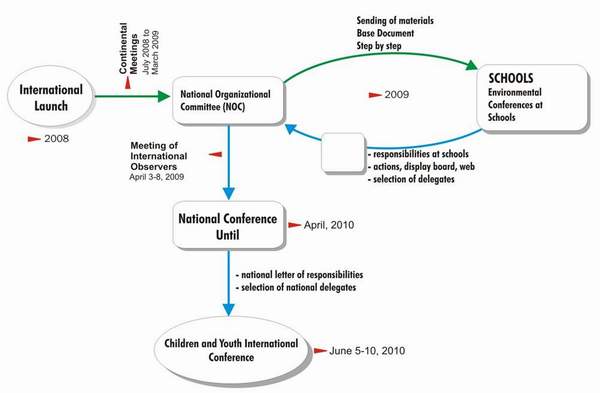
Figure 1: Conference at School, National Conference and International Conference.
4. OBJECTIVES OF THE INTERNATIONAL CONFERENCE
To promote the exchange of international experiences in an effort to make progress on extreme global social-environmental issues, to be achieved through school education and the participation of society.
To instill a common purpose within the highest number of teenagers, teachers, and communities; who in turn can appropriate locally how to be a part of planetary compromises; taking responsibility for sustainable societies, diffusing and going deeper into the fundamental topics related to: diversity, the Peace Culture, and planetary survival.
To contribute to the strengthening of the Educational Decade for Sustainable Development (United Nations / UNESCO) in the world.
5. PRINCIPLES
The International Conference creates an environment favorable to the exchange of experiences between the different participating countries regarding concepts and methodologies involving environmental education.
This will not simply occur only during the event - but during the entire process, where countries are invited to share their experiences on the Conference web site and through a virtual learning community. This socialization can contribute in a significant way for the programs and actions on environmental education already in existence in the different parts of the world. Through this model we can focus on the sharing of varied experiences with common principles. We can explore a common conceptual base while embracing the wide ethnic, social, and biological diversity of our planet’s people and places.
In the experience of the Children and Youth National Conference in Brazil, some fundamental principles go through the entire process, from the Conferences in Schools to the National Conference. These include:
• Environmental Education Planetary Ethics. Continuity of the process based on the principles and values of the Treaty on Environmental Education for Sustainable Societies and Global Responsibility, Earth Letter, Manifest for Life, and Letter of Human Responsibilities.
• Responsibility. The recognition of individual and collective responsibilities is the main idea, considering that the responsibilities are different. Each citizen becomes responsible within their own limit, determined by their limitations of access to information and power.
• Coordinated action with youth. The recognition of the role of youth as social subjects who live within and interfere with the present, not the future. This action is based on:
![]() The young choose the young, at the Conference the young will be the center of the decisions made by themselves, not by others.
The young choose the young, at the Conference the young will be the center of the decisions made by themselves, not by others.
![]() The young educate the young, the mobilization process is built with the young, respecting and trusting on their own capacity to be committed with actions to transform former actions; and
The young educate the young, the mobilization process is built with the young, respecting and trusting on their own capacity to be committed with actions to transform former actions; and
![]() One generation learns with another, partnerships between the different generations involved. Regarding environmental education, this characteristic becomes especially important because it is based on the concepts that children bring to their parents and teachers. Teenagers can easily pick up the tendencies to transform, depending on adults who give support for the necessary changes to take place through improving knowledge and opening up effective participation.
One generation learns with another, partnerships between the different generations involved. Regarding environmental education, this characteristic becomes especially important because it is based on the concepts that children bring to their parents and teachers. Teenagers can easily pick up the tendencies to transform, depending on adults who give support for the necessary changes to take place through improving knowledge and opening up effective participation.
• Formation of learning communities. The Conferences for the Environment at Schools contribute to transforming the quality of life and interfering in the local reality. This happens through cooperative processes with common goals, shared actions, and good results for all.
• Debate and local actions regarding global issues. The common topic will be debated and the actions will be focused on schools everywhere: global climate change / global warming (each country can include another topic of its own interest). Let’s think and act locally and globally.
6. ORGANIZATIONAL STRUCTURE
The Children and Youth International Conference for the Environment is based on an organizational structure that aims toward an articulated, shared, and potentialized way to interact between national and international organizations. This structure (Figure 2) will be able to mobilize different partners in different places. It is formed by the following groups and committees:
International Committee
• Formed by honorary guests and important personalities who will contribute toward the projection of these ideas internationally.
• May contribute to the political process on a global scale, as well as lending visibility and legitimacy to the whole process of the Conference.
• The International Committee, as well as the Conference, should have a name chosen in consensus by the Presidency.
Interministerial Working Group
• The Interministerial Working Group is composed of managers and technicians of the Ministries involved, regulated by Official Decree.
• The Group is responsible for: offering technical assistance, supporting the workshops and meetings to train the facilitators, making available pedagogical and conceptual material, and aiding in the formation and maintenance of communication webs.
Group of Political Articulation
• Formed by representatives of the Brazilian Government – of Ministries of Education, Environment, Foreign Relations, Civil House of the Presidency of the Republic; as well as representatives of the United Nations Agencies – UNESCO, UNICEF, UNEP, UNDP – and FPH [10] .
• The responsibility of this group is to give managerial direction and guidelines, to define agendas, to facilitate procedures, to give an opportunity to articulate the process and to guarantee the process management of the Conference regarding financing global mobilization. The United Nations agencies give support to the Interministerial Working Group to work internationally for the Conference by connecting people and involving their regional offices, capturing the required monetary resources, and promoting events to train facilitators on different continents.
National Organizational Committees (NOCs) • Brazil suggests that the committees be composed by representatives of the Ministry of Education and Environment and Civil Society, given their preference to youth groups. • The NOCs must coordinate the process on a national scale establishing communication with the Interministerial Working Group. They will be invited to mobilize their learning systems and to organize Conferences at Schools and the National Conference selecting delegates to travel to Brazil in 2010.
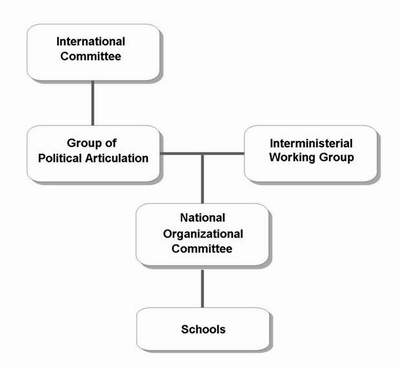
Figure 2: Diagram – Instances of decision and production
7. STEPS
Global Launch
The public launch of the Conference, in which the President of Brazil and his Ministries of Education, Environment, and Foreign Relations give an invitational DVD to all of the potential countries who will be represented at the International Conference. This act aims to establish an initial contact with: the Ambassadors of all of the countries of the world that have embassy staff stationed in Brasilia, multilateral political unions, as well as international NGOs, state-owned industries, and agencies for international cooperation and support.
Continental Meetings
From July of 2008 to March of 2009, the Interministerial Working Group will create workshops and presentations regarding the Brazilian Children and Youth Conferences experiences and methodologies [11].
It is necessary for representatives of the Ministry of Education of the participating countries to be part of the workshops as well as representatives of other parts of the government, international organizations, and civil society (including youth groups). The goal is to find managers who can contribute to the announcement of and organization of the Conference in all of the countries who will attend the 2010 Conference. These representatives are also invited to be a part of the international community available through the webpage of this conference.
Mid-term of the Decade of Education for Sustainable Development
Between July of 2008 and March of 2009, a number of preparatory continental meetings will be organized by UNESCO in order to prepare for the Mid-term Evaluation Meeting of the Decade of Education for Sustainable Development – DESD.
Following the idea of the continental meetings, the Interministerial Working Group of the International Conference will participate in these meetings with the DESD, presenting workshops about Children and Youth Brazilian Conference experiences and methodologies.
Between March 30 and April 1, 2009, during the Mid-term of the Decade Evaluation Meeting – which will occur in Bonn, Germany – a second launch of the International Conference will occur as a complementary action of the Decade – DESD. In that occasion we hope that many countries at that event will already be aware and starting to prepare their own Conferences within their own schools. These School Conferences must happen in 2009. _ This will be another opportunity for the countries’ representatives to exchange experiences and direct their questions about the Conference to the organizational team.
International Observers Meeting for the Third Children and Youth National Conference for the Environment
From April 3-8, 2009 the Third Children and Youth National Conference for the Environment will take place in Brasilia, Brazil. On this occasion, another parallel event will also occur, the International Observers Meeting, to which members of the International Committee, government representatives, multilateral organizations, and civil society representatives from many countries will be invited. This meeting aims to promote an experience of the methodology used in the National Conferences as well as to work with support materials, budget, and timeline according to each country’s specific issues.
Conference at Schools and Children and Youth National Conference for the Environment
Brazil will make various documents, from “Step by Step” to “The Conference at School,” available in English, French, and Spanish for school conferences. These resources are basic texts that are used in the organization of Brazilian National Conferences. These documents are available to guide the school communities in detailed form, in an effort to make the Conferences and debates reality. Countries which use these materials will then rely on their National Organizational Committee for continued support. While the general principles of the International Conference must be respected according to the chosen criteria, each participating country will have the ability to define the specific processes of their own Conferences (through their NOC).
It is up to the NOCs of participating countries to form that will organize and support the Conference at Schools and the National Conference, in addition to any needed workshops to train facilitators. The selection of delegates who will participate in the International Conference must happen by April of 2010.
Children and Youth International Conference for the Environment The democratic multicultural meeting of the selected delegates from all participating countries will happen from June 5-10, 2010 in Brasilia, Brazil. The International Conference will result in the creation of the Letter of Responsibilities “Let’s Take Care of the Planet” that will be given to a United Nations representative, summarizing the commitment made by the Conference attendees to build a sustainable society. We expect the participation of approximately 1,000 people in the final event between children, teenagers, companions, guests, and staff.
8. CALENDAR OF EVENTS
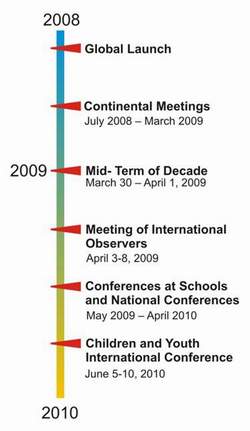
9. EXPECTED RESULTS
• To contributre to the insertion of environmental education into the formal educational systems of countries worldwide in a creative and organic way;
• To achieve a minimum participation of 10% of the elementary schools (5th to 8th grade) in the participating countries;
• To attain the participation of 50% of the countries of the world in the International Conference process;
• To create a “ Let’s Take Care of the Planet ” Charter, together with the delegates form the participating countries.
ANNEX
Attachment 1
SCHEDULED EVENTS FOR PRESENTATIONAL WORKSHOPS FOR THE TRAINING OF FACILITATORS.
- International Exposition – “Water and Sustainable Development” (Zaragoza, Spain)
From June to September of 2008, and International Exposition will take place in Zaragoza, Spain with the topic: “Water and Sustainable Development.”
The Interministerial Working Group participated in the educational week of that event, presenting a workshop from August 5-7, 2008 regarding children and youth conferences, experiences, and methodologies in Brazil.
.
- MERCOSUL Environmental Education Meeting
In October 2008, a meeting of the Spanish speaking countries of Latin Amercia will occur in Brasília. The Children and Youth International Conference intends to use this meeting to court representatives from the ministries of education and civil society from the Latin American countries present, as well as representatives of the ministries of environment, who will also be in that meeting. A workshop about the children and youth conferences experiences and methodologies in Brazil will occur.
- Communities of Portuguese Speaking Countries
The next regional seminar of the Communities of Portuguese Speaking Countries (CPSP), is set to take place in October, 2008 in Brasília, Brazil
Through this specific project, the Interministerial Working Group proposes to bring at least one representative of the ministry of education of each associated member of the CPSC to present a workshop about children and youth conferences, experiences, and methodologies in Brazil.
- “Climate Change: Influencing Future Citizens” Seminar (British Council, York, England)
During the Climate Change: Influencing Future Citizens seminar, organized by the British Council in York, England, from September 21-26 of 2008, a Children and Youth International Conference team will participate in a round table discussion.
The Brazilian experience on environmental education at schools, organized by the Ministry of Education, of the Government of Brazil, through the conference for the environment at schools, and Children and Youth International Conference: Let’s Take Care of the Planet will be represented. It will be an important moment to share the educational experiences related to public politics on environmental education.
Attachment 2
CHILDREN AND YOUTH NATIONAL CONFERENCES FOR THE ENVIRONMENT - PROCESSES AND RESULTS
The children and youth conferences for the environment in Brazil are designed for primary schools in which the students are between 11 and 14 years of age.
The process of the conference starts in schools, with the study and debate of a proposed topic and materials which are nationally distributed by the Management Organ of the National Policy for Environmental Education. The basic guiding text is “step by step” for the conference at schools. All of the elementary schools in Brazil receive at least one kit by mail containing the guide material.
With the guide material and the support of the school community, children and teenagers will create projects regarding the debated topics and produce posters to display the main ideas from their studies and debates. The next step is the conference for the environment at school. Where the responsibilities and actions of the school community will be defined and accepted, in addition to the selection of the delegates who will represent the ideas in state and national conferences.
The state organizational committees (SOCs) are very important in this process, because they are composed of local government institutions and youth movements. They strengthen the conferences in their state in addition to promoting workshops to train the facilitators. The Youth Collective for the Environment [12] chooses the delegates who will participate in the national conference and who will be responsible to make activities in the national conference in Brasília.
The conferences at schools and national conferences for the environment in Brazil have created a process of mobilization to strengthen the school as a space for debate about social and environmental issues in their community and on the planet. However, the results are not simply over when the debate ends. Throughout their participation in the entire process, the children and teenagers involved make a real commitment to the process, and demonstrate their commitment through the ensuing responsibilities.
This process serves to introduce ideas about how to think and act both locally and globally in daily life and society.
The results and consequences of this process in Brazil have been significant with regard to school and youth participation.
The Second Children and Youth National Conference’s final event brought more than 500 young delegates from all over the country to Brasília. These delegates participated in activities guided by 70 facilitators of the youth collective for the environment in addition to 17 young facilitators from Latin American countries, following the principle “the young educate the young.”
One of the consequences of the national conferences at school is the relationship with the COM-VIDAs, Committee for the Environment and Quality of Life at Schools [13], once these strategies act in synergy, they value the schools as spaces of participation to protect the environment and the quality of life, in addition to giving more sustainability to the mobilization created by the conferences.
The final result of the Second Children and Youth National Conference for the Environment was the Charter of Responsibilities – Let’s Take Care of Brazil, given by the teenagers to President Luiz Inácio Lula da Silva; the Minister of Education, Fernando Haddad; and the Minister of Environment at that time, Marina Silva. The teenagers presented the Charter expressing their commitment to build a “just, happy, and sustainable society,” and with responsibilities and actions full of dreams and necessities, instead of just waiting for the government to take action on its own.
Numbers of the Second National Conference
Conferences for the Environment at Schools
The 11,475 conferences for the environment happened including 11,297 at schools and 178 communities involving 3,801,055 people.
Percentage of school participants in relation to the total number of state schools
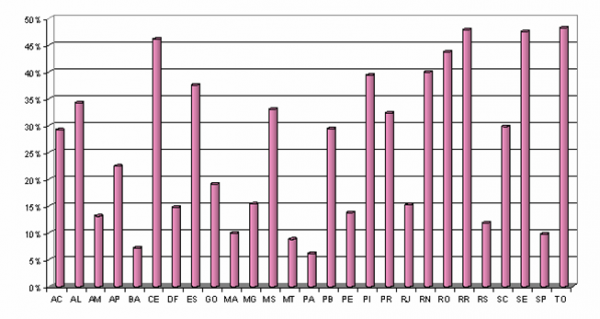 (data of MEC/INEP (by state) school census 2004)
(data of MEC/INEP (by state) school census 2004)
Conference for the Environment – Past Topics of Debate
All of the topics debated were relevant for the debates at schools and communities. Despite its place as the least discussed topic, ethnic diversity is still considered very important.
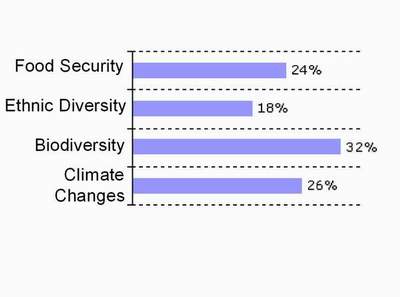
The responsibilities regarding each topic were consistent, clear, and coherent when compared to the proposal of the conferences at schools in 2003, showing a jump in quality and improvement from the previous [second] conference. Proposed by a basic document – the step by step for the conference for the environment at school, it was more consistent and complex.
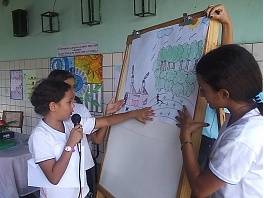
Conference for the environment at the elementary and high school “Francisco Nonato Freire” – in Ceará
Conferences for the Environment – School Profile
Total number of school participants – 11.297
• 54% were at the first conference;
• 49% participated in the training seminar program – “Let’s Take Care of Brazil”;
• 36% have a committee for the environment and quality of life - COM-VIDA;
• 88% were not located within the capital city and 74% were from urban areas.
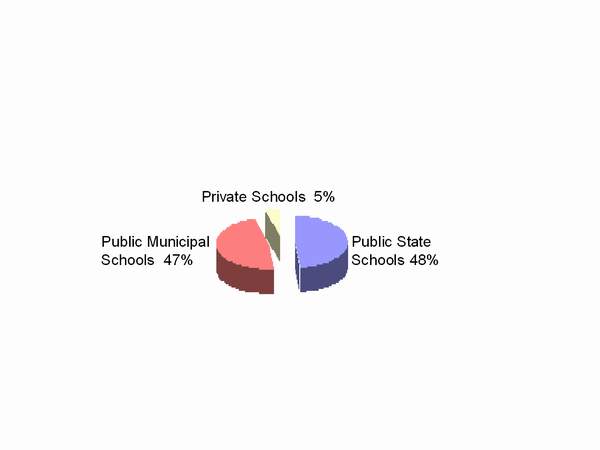
The results show the capillaries, integration, and continuing action of the Ministry of Education/ Management Organ of the National Policy for Environmental Education.
Conferences for the Environment – Community Profile
Total Number of Communities Participating – 178
• 40% are indigenous communities;
• 27% are rural settlement communities;
• 19% are communities where students are regularly exposed to homelessness, drug and alcohol abuse, domestic violence, etc.
• 14% are exclusive ethnic villages (quilombolas)
The participation of the indigenous community was possible because of their previous involvement in other conferences, and through the principals and teachers of those communities and all over the country.
Conferences for the Environment – Participant Profile
| Students from 5 – 8 Grades | 56% |
| Community | 16% |
| Students from 1 – 4 Grades | 14% |
| High School Students | 10% |
| Teachers | 5% |
Profile of the Delegates at Schools and Communities
• 66% girls
• 34% boys
• In total, 1% were special needs children.
Self-declaration of the race of delegates
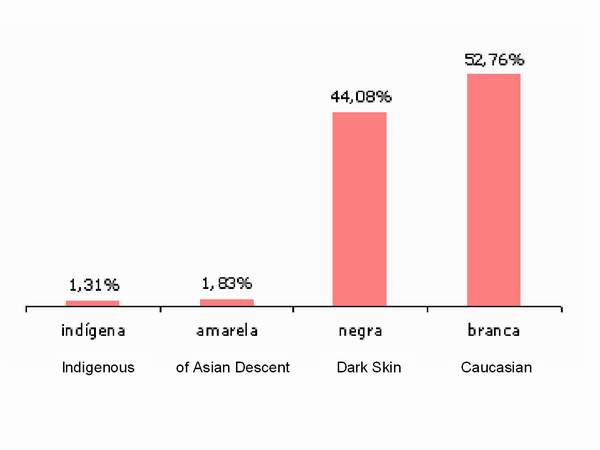
Observations:
• The dark skin category is composed of African descendants and other racial mixes.
• 0,02% did not declare a race
• 47 separate Indigenous ethnicities were declared
It is necessary to value both the ethnic diversity and gender equality that was present in the second conference’s pedagogical process, as it is reflective of the delegate profile. Also, it is interesting to observe the majority of girls selected as delegates. This indicates not just a female interest in social-political actions, but is also reflective of Brazil’s tendency to have more girls within the school system. In other words, in this age girls go to school for a longer period of time than boys. This is due to the fact that many boys abandon the school system in an effort to find work. Also, there is a balance between the self-declaration of Caucasian and dark skin that faces the traditional Brazilian ways regarding cultural, racial, and social prejudice.
 Documentos
Documentos
![]() You can download the document here (28 pgs, pdf, 2,7 Mo)
You can download the document here (28 pgs, pdf, 2,7 Mo)
[1] The Children and Youth National Conferences for the Environment were planned by the ex-Minister of the Environment in Brazil, Marina Silva. The text guide and the results of the Brazilian Experience can be found in the second attachment.
[2] The Management Organ was created by Legislation nº 9.795/99, that establishes the National Policy for Environmental Education – NPEE, regulated by Decree nº 4.281/02 and implemented in June of 2003.
[3] Represented by the General Coordination Council of Environmental Education (CGCEE), within the Department of Integral Education – of the Secretary of Continuing Education, Alphabetization, and Diversity (SCEAD).
[4] Represented by the Director of Environmental Education of the Minister of the Environment, in the Secretary of Institutional Articulation and Citizenship.
[5] Created in 2000, and passed through a process of public consultation in 2004.
[6] Edith Sizoo, guest International Observer with the Second National Conference for Children and Youth for the Environment. She is the coordinator of the Letter of Human Responsibilities, Foundation of Charles Leopold Meyer (FPH) a French-Swiss Entity.
[7] Part of the Ahmedabad Declaration that continues: “the assumption of what constitutes an acceptable quality of life for some people, generally means deprivation of others. The abyss between rich and poor only increases. The climactic crisis, increasing the risks for the health and poverty as well as decreasing the biodiversity are indicators of unsustainable developmental models and life styles. Models and alternative points of view for a sustainable future exist, and the action is necessary to make them an urgent and necessary reality. Human rights, equality between the sexes, social justice, and a balanced environment have to be global priorities. Education for the sustainable development is essential to make this transformation reality.”
[8] Was composed by the Assessory Committee of the Management Organ of the National Policy for Environmental Education.
[9] The structure and role of the NOCs is described in further detail in the item “Organizational Structure.”
[10] The Foundation of Charles Léopold Mayer pour le Progrès de l´Homme, created by the Charter of Human Responsibilities.
[11] The events where the participation of the International Conference Working Group are already confirmed, and are available in the Attachment 1, with a brief description of dates, places, and ways to be a part of the team (a workshop or presentations).
[12] The Youth Collective for the Environment is a group of young people and youth organizations that mobilizes itself regarding social-environmental issues.
[13] The COM-VIDA is a new organizational way at school that was proposed by the participants of the Children and Youth Conference for the Environment in its first edition. Its main job is to contribute to a daily space of participation, democracy, animation, and health at school, promoting the exchanges between school and community. It is based on the students, teachers, employees, principles, and community participation.


